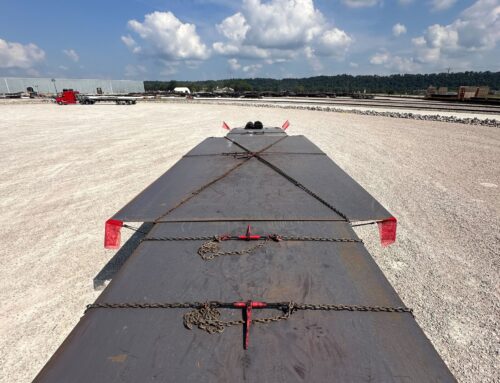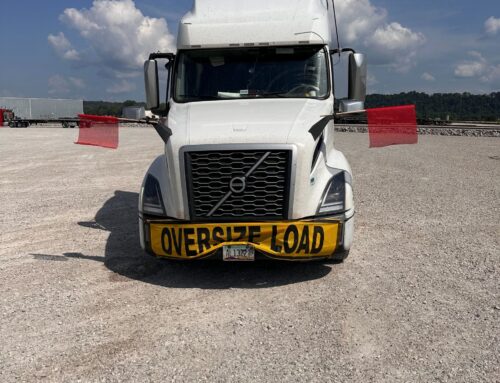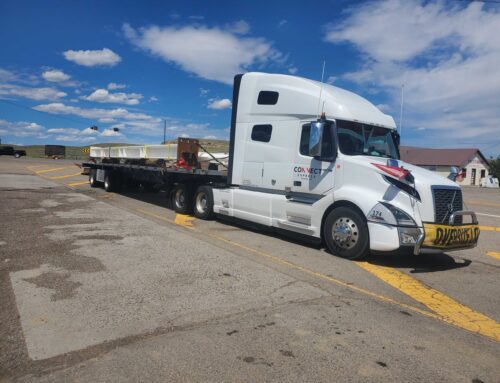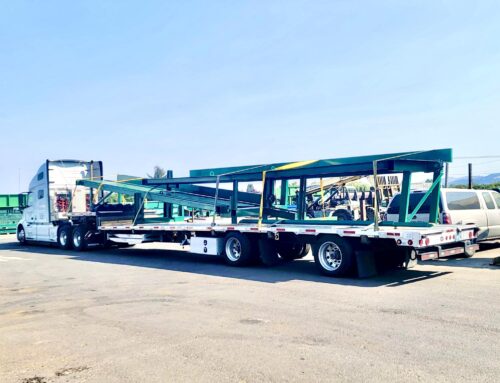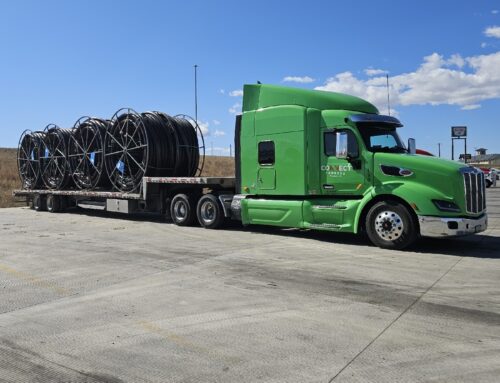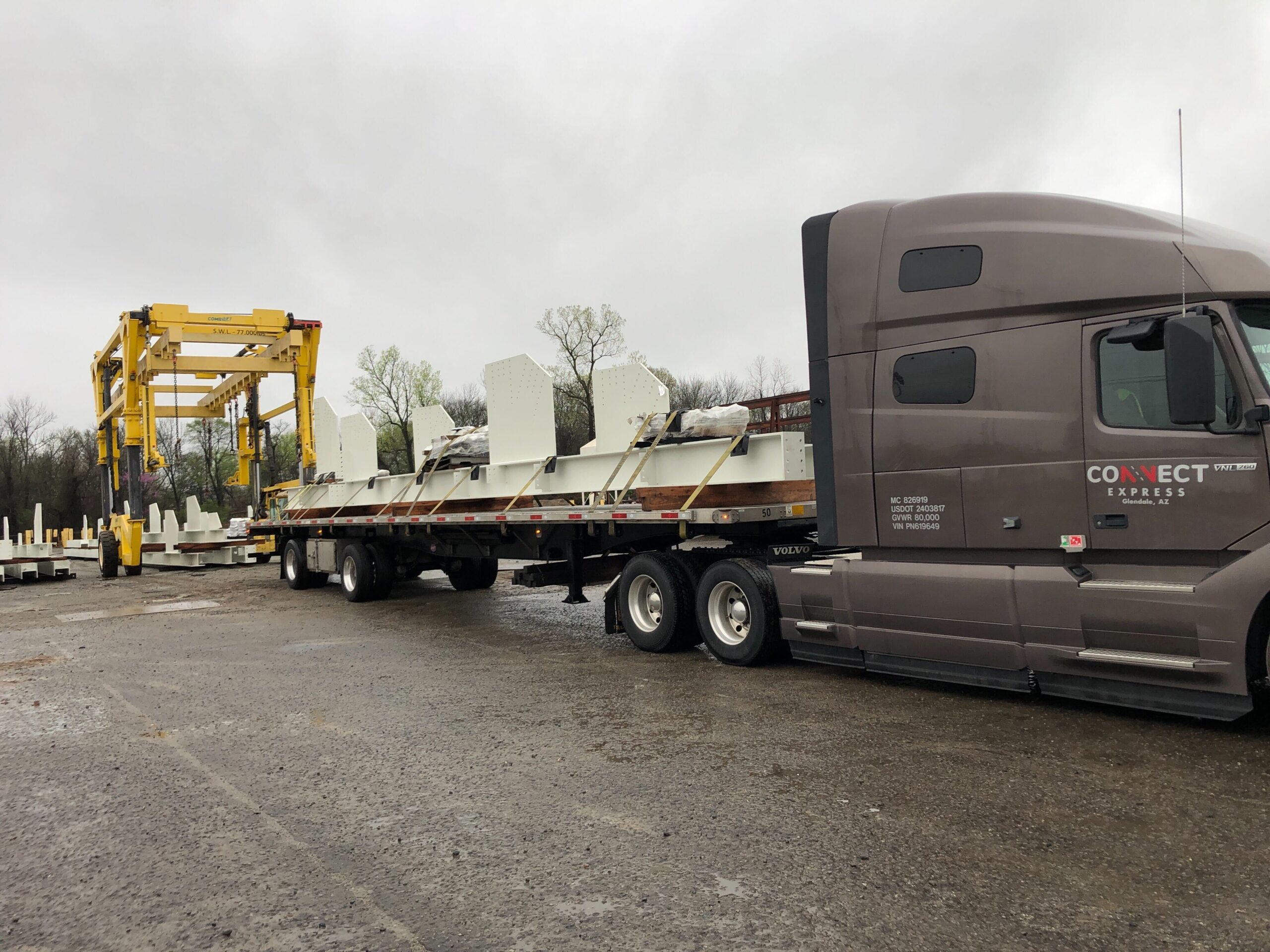
Cost-Effective Steel Beams Transport Solutions
How do you ensure safe and efficient logistics for steel beam transport?
Steel beam transport requires specialized equipment, meticulous planning, and the right freight management, beyond what a standard truck can handle.
Steel beams must be securely fastened to a flatbed trailer, necessitating cranes, forklifts, and sturdy trailers.
Choosing the Right Equipment
When overseeing the logistics of steel beam transport, selecting the appropriate equipment is paramount. Ensuring your flatbed trailer is rated for the weight and dimensions of your freight load is essential. Moreover, using high-capacity forklifts or cranes for loading minimizes potential damage and enhances safety. Equipping your trailer with proper tie-down mechanisms, such as chains and straps specifically suited for heavy loads, mitigates the risk of load shift during transit.
Selecting the Right Trailer
Choosing the appropriate trailer for steel beam logistics is paramount in ensuring safety and efficiency.
Steel beams can weigh up to 50 tons, making sturdy, high-capacity trailers essential for transport.
Flatbed trailers are widely used due to their open deck, which makes the freight loading and unloading of steel beams easier. For particularly long beams, extendable flatbeds can be the optimal solution.
Additionally, trailers equipped with multiple axles can better distribute the weight, reducing the strain on individual tires and axles, thereby enhancing overall steel beam transport safety.
Necessary Loading Machinery
Using the right machinery is crucial.
Efficient loading of steel beams relies heavily on proper equipment. High-capacity forklifts and cranes are vital tools for handling these substantial weights. In some instances, you may also use specialized lifting equipment with specific attachments, designed to safely manage different types of beams. Moreover, ensure all machinery is regularly maintained to prevent any unexpected failures.
Incorrect machinery for loading steel beams can lead to accidents.
A well-maintained crane or forklift will significantly decrease the risk of accidents during the loading process. This machinery must meet industry safety standards and be operated by trained and certified personnel to ensure a smooth and safe loading operation.
Load monitoring equipment is invaluable.
Utilizing equipment like load cells can provide real-time feedback. This assists operators in maintaining balance and avoiding overloading, thus enhancing operational safety and efficiency.
In summary, the combination of high-capacity forklifts, cranes, and specialized attachments, coupled with an emphasis on machinery maintenance, ensures safety and efficiency during the loading of steel beams. Investing in the right tools and training operators adequately can save both time and money while safeguarding your crew and cargo.
Safety Precautions

When transporting steel beams, rigorous attention to pre-transport safety steps must always be maintained. Ensuring every step is properly planned and executed can significantly minimize risks.
It’s crucial to conduct thorough risk assessments and make sure all necessary personal protective equipment (PPE) is in use. Equipping your team with helmets, gloves, and high-visibility clothing ensures optimal safety during loading and unloading.
Always verify DOT regulations and secure the load properly, adhering to all guidelines to prevent accidents on the road.
Conducting Risk Assessments
Risk assessments are crucial for safe transport.
A comprehensive risk assessment identifies potential hazards. This process allows you to put safety measures in place proactively, rather than reacting to incidents after they occur. Documentation, whether digital or on paper, forms complete records of these evaluations, helping pinpoint areas that may need improvement and ensuring continual safety monitoring.
They involve examining all aspects.
Key elements include identifying hazards – such as heavy beam shifts due to improper loading techniques or equipment failures – and assessing the likelihood and consequences of these risks occurring.
Regularly updating risk assessments is essential to address newly identified risks, especially considering advancements in construction requirements, equipment updates, or changes in transportation regulations. This ongoing process ensures your safety protocols remain relevant and effective in protecting both personnel and cargo.
Proper PPE for Crew
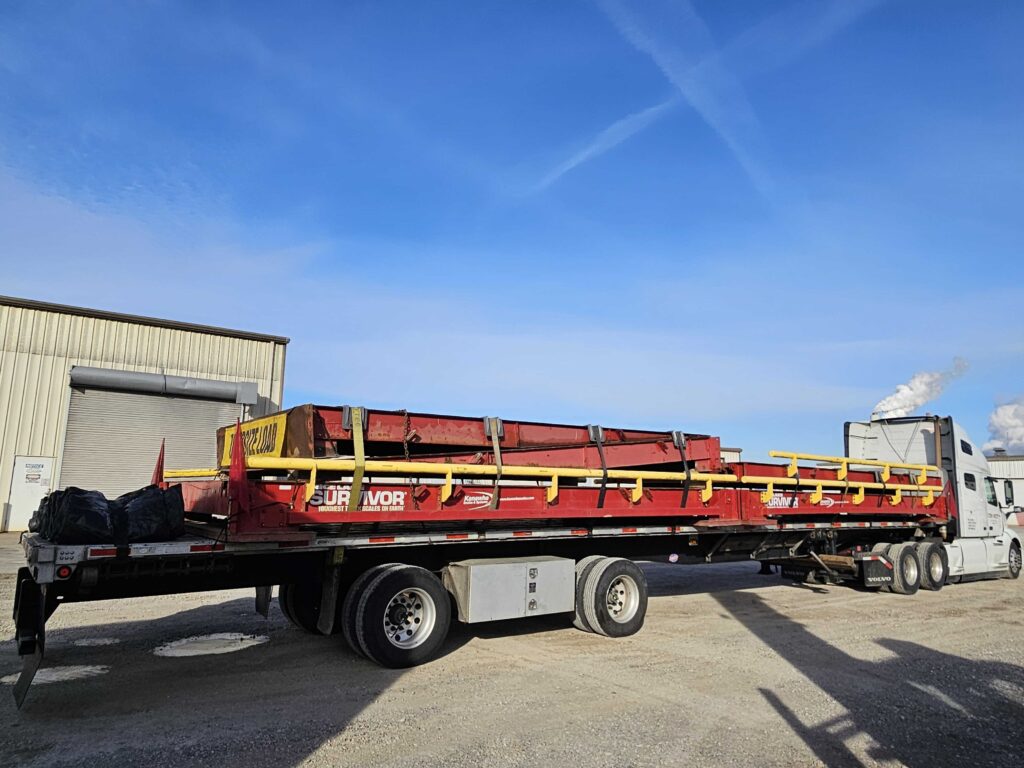
Ensuring your crew is outfitted with the proper Personal Protective Equipment (PPE) is essential for their safety during the transport of steel beams.
- Hard Hats – Protects against head injuries from falling objects or impacts.
- Safety Glasses – Shields eyes from debris, dust, and other particles.
- High-Visibility Vests – Ensures crew members are easily seen, reducing the risk of accidents.
- Steel-Toed Boots – Provides foot protection from heavy objects and punctures.
- Work Gloves – Guards against cuts, abrasions, and chemical exposure.
- Hearing Protection – Reduces exposure to hazardous noise levels during loading and transport.
- Full-Body Harnesses – Necessary for any tasks that involve working at heights.
Adhering to established safety protocols by equipping your crew with the appropriate gear helps prevent workplace injuries.
Regular training on PPE usage is equally important to ensure each team member is not only protected but also knowledgeable about how to use and maintain their equipment effectively.
Loading Steel Beams
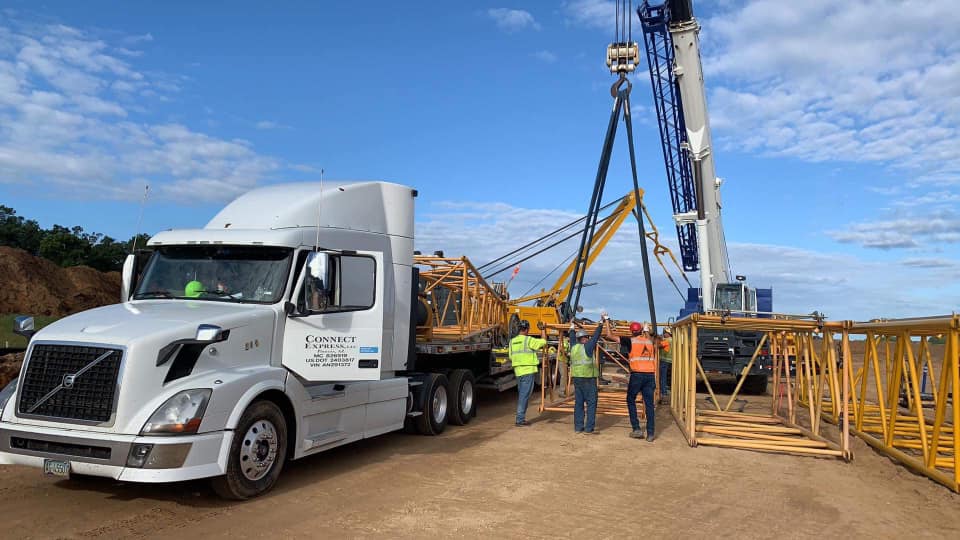
Loading steel beams requires precision and safety measures to ensure efficient operations and the protection of all personnel involved. Begin by ensuring the trailer is on flat, level ground, and clear of obstacles to avoid destabilizing the load.
Identify and designate duties for all team members, ensuring everyone understands their role and the potential impact of their actions. Proper use of cranes or high-capacity forklifts is crucial to safely placing the beams.
Designating Duties
Properly assigning roles during the loading process is vital to ensure safety and efficiency.
- Load Supervisor: Oversees the entire loading process.
- Safety Officer: Ensures all safety protocols are followed.
- Equipment Operator: Manages the cranes or forklifts.
- Spotter: Assists the equipment operator with visibility and alignment.
- Securing Specialist: Handles the application of chains, straps, or binders.
Each team member must be well-trained and fully aware of their responsibilities.
Clear communication is essential to prevent accidents and expedite the loading process.
Steps to Secure Beams
Securing beams is a critical process.
Start by positioning the forklift or crane in alignment with the trailer. Ensure the equipment operator gently lifts and precisely places the beams onto the flatbed. Once positioned, utilize chains or straps to bind the beams firmly to the trailer, adhering to DOT regulations.
Use ample securing devices.
Ensure that each securement point is double-checked – it’s crucial to inspect for both proper tension and placement to maintain load stability in transit – and employ belly straps for stacked beams.
Finally, conduct a thorough inspection to confirm all connections are secure. This involves visual and manual checks to ensure there is no movement, and the load complies with all safety standards, safeguarding both transport personnel and public roadways.
Ensuring Compliance
Adhering to transportation regulations ensures safety and avoids costly penalties. Compliance with the Department of Transportation (DOT) regulations is mandatory for all flatbed trucking professionals transporting steel beams.
First, secure all necessary permits prior to transport, especially for oversized or overweight loads. Obtain approvals from relevant state infrastructure departments, ensuring that all documentation is accurate and current before departure.
Understand the distinctions between local and interstate regulations to align with each jurisdiction’s requirements.
Weight and Dimension Regulations
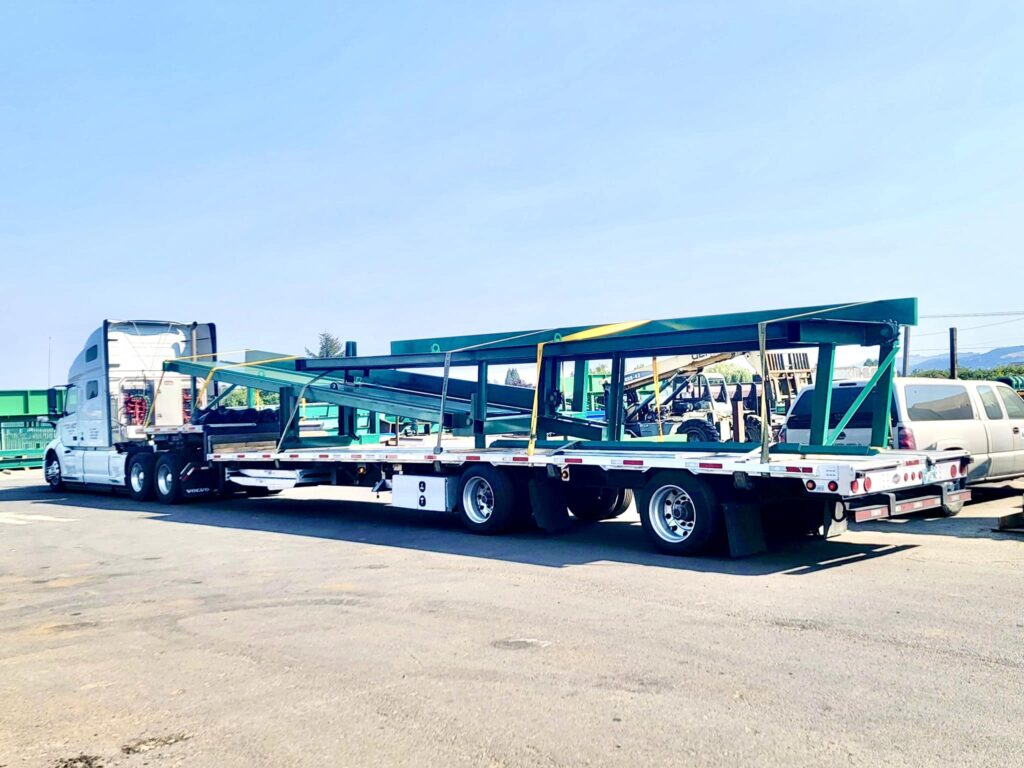
The Department of Transportation (DOT) imposes strict regulations on the weight, dimensions, and securing of loads. These regulations ensure the safety of the public and the integrity of the roadways.
Failure to comply with these regulations can result in hefty fines.
When transporting steel beams, it’s crucial to measure the height, width, length, and weight of your load accurately. These measurements are necessary for obtaining the correct permits and ensuring your load remains compliant with both federal and state laws.
Adhering to these regulations not only keeps you compliant but also minimizes the risk of accidents or damages during transit. For oversized loads, make sure to check if escort vehicles are required to guide the steel beam transport safely, especially through high-traffic areas. This is essential to protect both the load and other road users.
Permits and Escort Vehicles
Transporting steel beams often requires special permits and escort vehicles to ensure compliance with state and federal regulations.
These permits are necessary for oversized or overweight loads.
Each state has its specific requirements for the transportation of oversized loads, which can vary based on dimensions, weight, and the route taken.
Escort vehicles, commonly known as “pilot” vehicles, serve to increase safety by providing warnings to other motorists about the presence of a large or heavy load. Their usage can help prevent accidents and facilitate smoother transport.
Is steel expensive to transport?
Transporting steel can indeed present significant cost considerations. The expense is largely due to the weight and density of steel, which necessitate specialized handling and equipment.
Steel is a dense material, meaning that even relatively small volumes can be exceptionally heavy. This requires the use of heavy-duty flatbed trailers designed to handle high-weight loads, contributing to transportation costs.
Additionally, safety and regulatory compliance play critical roles. Securing such heavy loads takes meticulous attention to detail to ensure they remain stable and safe during transit. This often involves specific types of tie-down equipment and techniques.
Environmental factors, such as road conditions and fuel costs, also affect transportation costs. Heavy loads like steel can result in increased fuel consumption and potential wear and tear on equipment, further driving up expenses.
Economies of scale can sometimes offset these costs, but logistics management must be meticulous to achieve cost-efficiency.
How is steel usually transported?
When transporting steel, it’s crucial to consider the weight and dimensions of the material. Steel products can range from coils and sheets to beams and bars, each requiring specific handling methods.
Flatbed trucks are frequently employed due to their inherent versatility and ability to accommodate oversized loads. These trucks allow for easy loading and unloading of heavy steel products using cranes or forklifts.
Securement is paramount when transporting steel. Steel is often secured using chains, straps, and edge protectors to prevent movement during transit. Proper securement ensures safety and compliance with DOT regulations.
In addition to flatbed trucks, rail transportation is also utilized for steel, especially for long-distance hauls. Railcars designed for heavy and oversized freight provide stability and efficiency for transporting bulk steel products.
Intermodal transport may also be a viable option, combining trucking and rail services. This method leverages the strengths of both modes, optimizing the logistics of moving steel across various terrains and distances.

